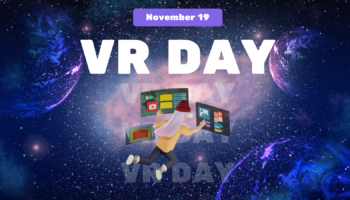Washington, D.C. – On March 27, 2024, the XR Association hosted the first webinar of their Charting the Future of Immersive Technology series, “Norms and Behaviors in Immersive Spaces.” The webinar delved into one of the five topics covered in XRA’s recent whitepaper, Charting the Future of Immersive Technology: Transforming Work, Education, Health and Entertainment.
Moderated by XRA’s CEO Elizabeth Hyman, the discussion featured Daniel Kelley, Director of Strategy and Operations for the ADL Center for Technology and Society; Alexis Miller, Director of Product Management for Schell Games; and John Dabill, Sr. Director of Product Operations & Biz Dev for VIVERSE from HTC. Panelists and their organizations participated in the Future of XR Advisory Council (XRAC), an independent advisory council of over sixty experts from industry, academia, public interest, and government convened by XRA to discuss the critical challenges and solutions for immersive technologies.
“We’re seeing a lot of really interesting positive momentum in the enterprise space, whether it’s using this type of technology for healthcare, education, manufacturing, training, that is really coming to the fore,” said Hyman. “But we’re also trying to make sure that we unearth the conversation here and encourage tooling and ways of thinking about all this.”
Participants elaborated on their thoughts and insights shared during the XRAC meetings, which were used to inform XRA’s final whitepaper. The panelists also discussed ways to promote safety and inclusivity for users in immersive environments, and how that may impact how users see and experience XR technologies.
Hyman began the discussion by asking participants why we need safe and inclusive immersive spaces, and how that rests on establishing certain norms and behavior in these spaces. Panelists unanimously agreed that creating inviting spaces promotes group cohesion, enjoyment, and nonverbal understanding of information for people.
Dabill also emphasized how virtual reality and business spaces can help people feel more confident in themselves by allowing them to explore different looks, identities, and communities online. However, the threat of harassment and negative incidents may deter users from feeling included and safe in an immersive environment.
“You can have different communities set their own norms, but there should be some baselines and where they get set is an important part of this,” Dabill said. “And as part of that, I think it’s important to have some guiding principles that can guide you in subsequent decisions that you make.”
The webinar also touched upon the importance of mitigating abusive speech among users and the role of content moderation in immersive systems. Hyman asked participants to share how they are utilizing content moderation tools in their platforms, and how the industry could do a better job of educating consumers about the tools that do exist.
“My hope is that in the future, it will become more affordable and a lot easier for [content moderation tools] to be something that is table stakes,” said Miller. “And that it is just an expectation that when you go into your setting and you’re talking to other people, you can’t just say whatever terrible things you want to say without consequences.”
Panelists also discussed the importance of considering different perspectives in discussions around norms and behaviors, specifically those of marginalized communities most likely to be targeted by online hate speech. Kelley stressed the role companies have to focus on the feedback from marginalized communities and ensure they have a voice at the table.
“The fundamental principle that we urge companies is to center the experience of people from marginalized communities in your space,” Kelley said. “If you put at the center of your experience the people who are most likely to be harmed by hate, who are most likely to feel unsafe, you’re more likely to have a safer space for all people.”
The discussion touched on a variety of topics relevant to establishing norms in immersive spaces, and advice for companies in the space. The full webinar will be released in the coming weeks. Subscribe to our XR Alert, Twitter, LinkedIn and YouTube to stay up to date on new releases.
This was the first webinar episode in the XR Association’s Charting the Future of Immersive Technology series. Next month, the second webinar episode will focus on another core issue area of the white paper – Safety and Well-Being for Youth. Read the full paper to stay informed ahead of the webinar.





